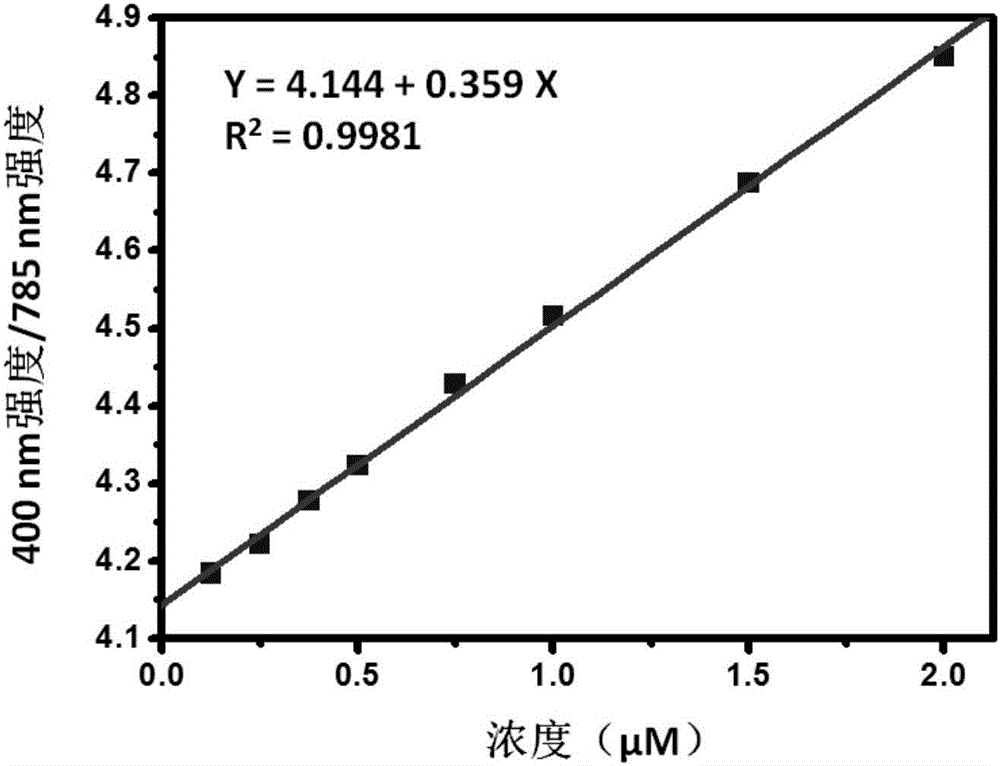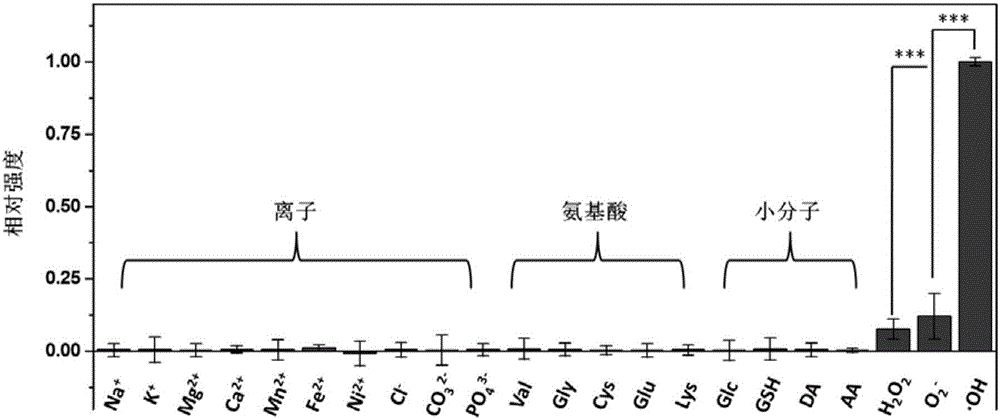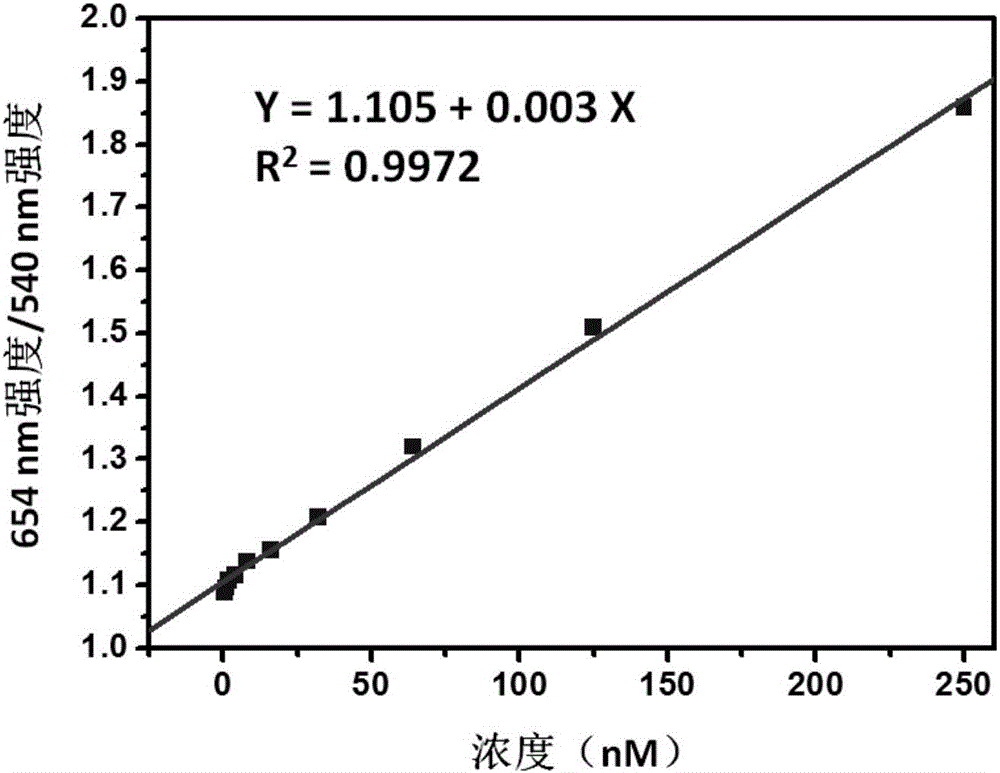Method for performing stepped detection on hydroxyl radical concentration of solution
A free radical and hydroxyl technology, applied in the field of analysis and detection, can solve the problems of inaccurate and effective quantitative detection, poor sensitivity, slow detection speed, etc., and achieve the effect of improving the linear detection range, reducing the detection limit, and simple materials
- Summary
- Abstract
- Description
- Claims
- Application Information
AI Technical Summary
Problems solved by technology
Method used
Image
Examples
Embodiment
[0062] Example, indocyanine green modified NaLuF 4 : Yb, Er rare earth nanomaterials to detect the concentration of hydroxyl radical solution:
[0063] 1) Drawing of standard curve: 300 μL of 125nM, 250nM, 375nM, 500nM, 750nM, 1μM, 1.5μM, 2μM of hydroxyl radical solution and 700μL of 1mM indocyanine green modified NaLuF 4 : The aqueous solution of Yb and Er rare earth nanomaterials is evenly mixed, and after standing at 25°C for 10 minutes, measure the UV-visible absorbance of the mixture, process the data to obtain the UV-visible absorbance, and obtain the standard curve of concentration and absorbance, as shown in figure 1 shown. The detection range is 125nM-2μM, and the lowest detection limit can reach 4pM.
[0064] Separately mix 300 μL of 125pM, 250pM, 500pM, 1nM, 2nM, 4nM, 8nM, 16nM, 32nM, 63nM, 125nM, 250nM hydroxyl radical solution with 700μL, 1mM indocyanine green modified NaLuF 4 : The aqueous solution of Yb and Er rare earth nanomaterials is evenly mixed, and aft...
PUM
| Property | Measurement | Unit |
|---|---|---|
| Diameter | aaaaa | aaaaa |
| Length | aaaaa | aaaaa |
| Diameter | aaaaa | aaaaa |
Abstract
Description
Claims
Application Information
 Login to View More
Login to View More - R&D
- Intellectual Property
- Life Sciences
- Materials
- Tech Scout
- Unparalleled Data Quality
- Higher Quality Content
- 60% Fewer Hallucinations
Browse by: Latest US Patents, China's latest patents, Technical Efficacy Thesaurus, Application Domain, Technology Topic, Popular Technical Reports.
© 2025 PatSnap. All rights reserved.Legal|Privacy policy|Modern Slavery Act Transparency Statement|Sitemap|About US| Contact US: help@patsnap.com



